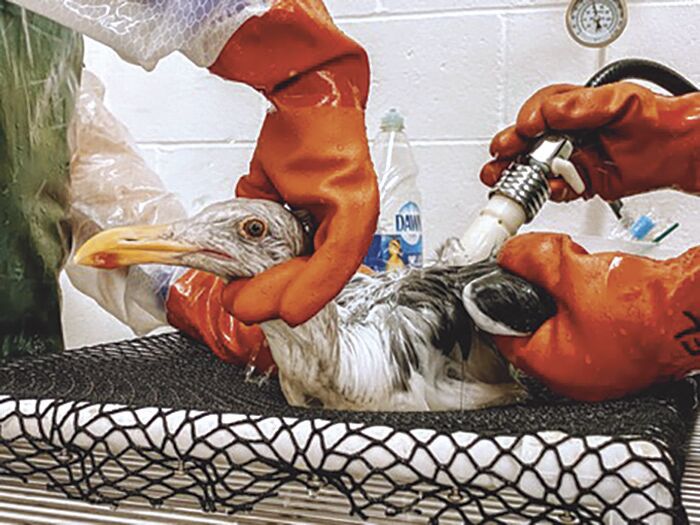
When approximately 25,000 gallons of crude oil gushed into the Pacific Ocean from a ruptured pipeline near Huntington Beach on Oct. 2, it spread to the ocean’s surface and into coastal wetlands. Teams of trained volunteers fanned out to look for oil-covered animals in need of help between Bolsa Chica and Laguna Beach. A total of 117 birds and mammals have so far been recovered in the days that followed, dead or alive.
California’s “Oiled Wildlife Care Network” (OWCN) continues to post updates on the oil spill’s effect on wildlife. As of Oct. 23, the latest update, Pipeline P00547 Incident has resulted in a total of 32 oiled birds recovered alive, 78 birds recovered dead, 19 live birds released after being cleaned, one marine mammal recovered alive and six marine mammals recovered dead.
The most frequent kinds of birds found dead because of the oil spill: 11 Brandt’s cormorants, nine Western gulls and six Eared grebes.
The most frequent oiled birds found alive: eight Western grebes, seven Snowy plovers and five sanderlings. The fact that this many snowy plovers were affected is alarming, because they are an endangered species, but they appeared to be recovering.
As far as mammals, three sea lions and one bottlenose dolphin were found dead. One oiled dolphin was found alive.
Recovered birds and animals are taken to the closest rehabilitation center, which in this case is LA Oiled Bird Care and Education in San Pedro. Oiling affects their ability to stay warm and dry in the water, and without the oil being cleaned off, they will die.
The veterinary school of UC Davis runs the OWCN for the entire state. They write, “If you see oiled wildlife, please call 1-877-UCD-OWCN (823-6926) and report immediately. DO NOT PICK UP OILED WILDLIFE.”